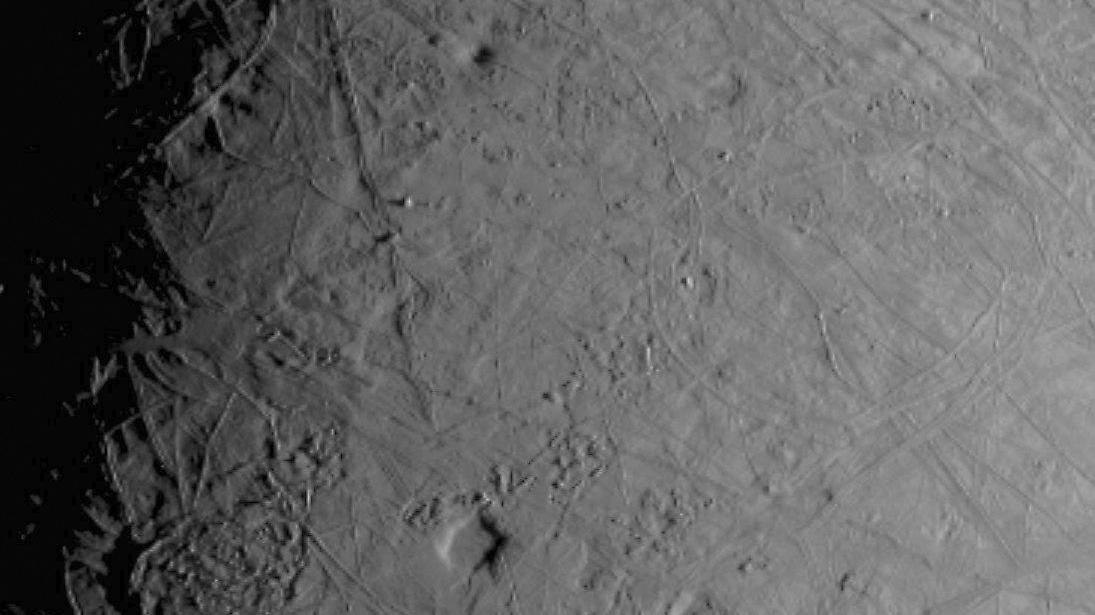
The complex, ice-covered surface of Jupiter's moon Europa was captured by NASA's Juno spacecraft during a flyby on September 29, 2022. /AP
NASA on Friday released its Juno spacecraft's first picture as it made the closest approach to Jupiter's moon Europa in more than 20 years.
The picture was taken when Juno flew within approximately 352 kilometers of Europa, which was thought to have an ocean flowing beneath its thick frozen crust, raising the possibility of underwater life.
The photo is a close-up of Europa's equatorial region, crisscrossed by ridges, troughs and possibly an impact crater. It will provide details on how "the structure of Europa's ice varies beneath its crust," said NASA.
"Scientists can use all this information to generate new insights into the moon, including data in the search for regions where liquid water may exist in shallow subsurface pockets," according to NASA in a statement.
The latest observations will also help NASA plan for its Europa Clipper mission, due to launch in 2024 and arrive at the Jovian system – Jupiter, its rings and moons are included – in 2030.
NASA's former Galileo spacecraft still holds the Europa flyby record, passing within 351 kilometers in 2000.
(With input from AP)








 User Center
User Center My Training Class
My Training Class Feedback
Feedback












Comments
Something to say?
Log in or Sign up for free